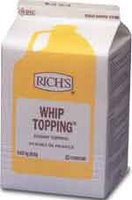Everything you say bounces off me and sticks on you!

Nyah! Teflon is really taking the heat for the use of Perfluorooctanoic acid (PFOA). And I think they should. Although Teflon doesn't contain much if any PFOA, DuPont didn't disclose what it knew about the toxicity of its manufacture until a former employee sent the cat skidding out of the microwave popcorn bag. It cost them millions.
If you're checking here to see if Teflon is safe: it's reasonably safe. Once that stuff starts to peel or crack, dump it. Don't cook in it without something in it, be it liquid or food because if it scorches, it's dangerous. Don't lose sleep over the PFOA content in the actual pan, though.
We use a teflon coated pan for cooking eggs. Eggs become cooked at fairly low temperatures -- around 150 degrees. And they stick like hell without teflon or a load of butter. So we use one for that, and our wok, because it's in good shape. We stopped buying teflon-coated pans because the teflon peels off or starts to degrade in a way that forces me to run out and buy a new one too often. Even if it's an expensive pan. (If you have an expensive one, bear in mind that they are great heat conductors and aren't meant to be used over high heat).
Also, if you want deglaze (release the browned bits from meat or some veggies using wine to make a sauce reduction) you won't be able to do it with teflon.
That said, there are lots of other things that are just as bad as the chemicals they're using. New car smell? Plastics gassing off. New construction? Ditto. New carpet. Uh huh. New paint -- that horrible smell is the volatile organic compounds. So. Let's hope the EPA steps on them so that they stop using PFOA in the manufacture (they also use it for Goretex and Scotchguard...). Until then you can stop buying new Teflon til they stop using the stuff, and don't worry about the Teflon you already have as long as it's in good shape.





